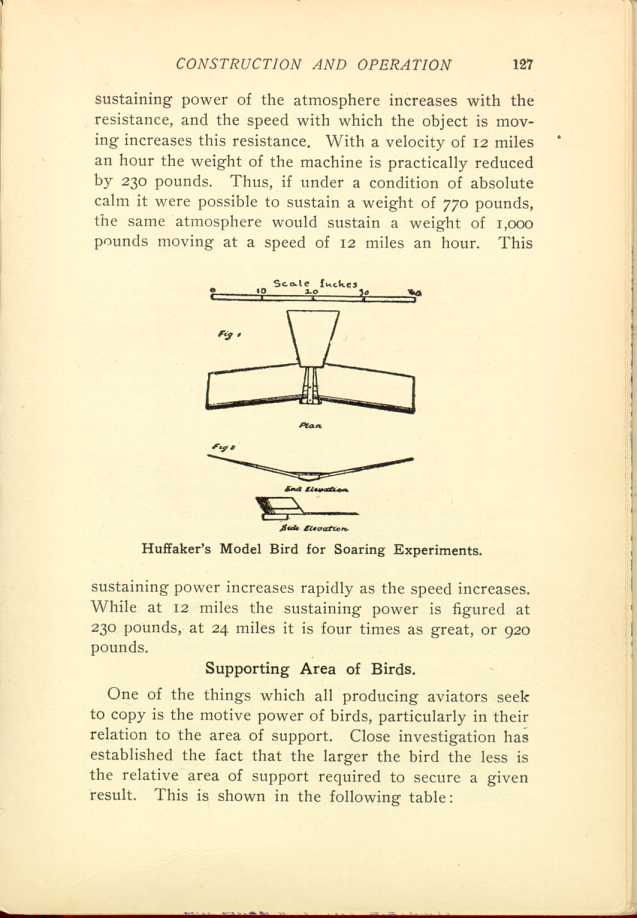Wind Pressure a Necessity.
While all this is true, the fact remains that wind pressure, up to a certain stage, is an absolute necessity in aerial navigation. The atmosphere itself has very little real supporting power, especially if inactive. If a body heavier than air is to remain afloat it must move rapidly while in suspension.
One of the best illustrations of this is to be found in skating over thin ice. Every school boy knows that if he moves with speed he may skate or glide in safety across a thin sheet of ice that would not begin to bear his weight if he were standing still. Exactly the same proposition obtains in the case of the flying machine.
The non-technical reason why the support of the machine becomes easier as the speed increases is that the
127
